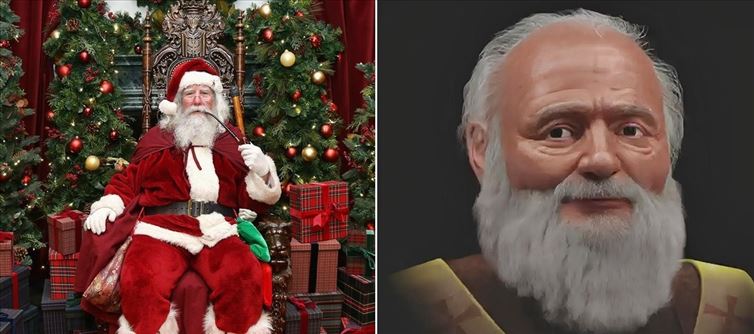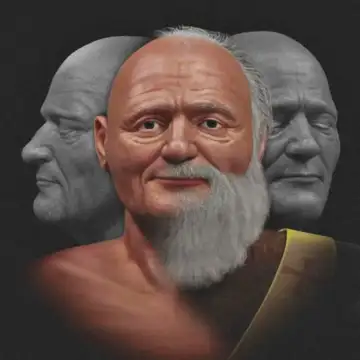
 During the early decades of Christianity, a Christian bishop named Saint Nicholas was well-known for his giving and compassion. His kind deeds established the basis for the Dutch character Sinterklaas, who eventually combined with the english Father christmas to become the modern-day Santa Claus.
During the early decades of Christianity, a Christian bishop named Saint Nicholas was well-known for his giving and compassion. His kind deeds established the basis for the Dutch character Sinterklaas, who eventually combined with the english Father christmas to become the modern-day Santa Claus.Up until today, Saint Nicholas has not been faithfully portrayed, despite his enormous popularity.
According to Cicero Moraes, the project's principal investigator, the reconstruction method entailed building a three-dimensional (3D) model of the skull using information gathered by Luigi Martino in 1950.
In order to guarantee that the final representation was both anatomically and statistically coherent, the researchers then traced face profiles using statistical projections and anatomical deformation techniques.
According to Moraes, the final image depicts a "strong and gentle face," which is in perfect harmony with the descriptions in the well-known poem "A Visit From St. Nicholas," which was published in 1823 and is also known as "Twas The Night Before Christmas."
The recreated face has a thick beard and a wide frame, which are traits of modern Santa Claus representations.
In addition to reflecting physical characteristics, Moraes emphasized that this image exemplifies the giving and kindness that Saint Nicholas stood for.
The importance of Saint Nicholas' legacy was emphasized by co-author Jos Luis Lira, who noted that he defended his convictions even in the face of strong authority, such as the Roman Emperor. His enduring remembrance is a Christmastime emblem of goodwill that appeals to people of all cultures, not just Christians.
In addition to providing insight into the historical individual, this scientific endeavor deepens our comprehension of how folklore changes over ages, turning a real person into a beloved holiday icon that is celebrated all over the world.




 click and follow Indiaherald WhatsApp channel
click and follow Indiaherald WhatsApp channel